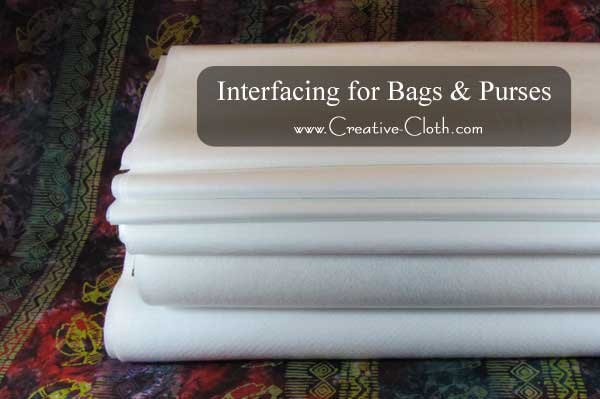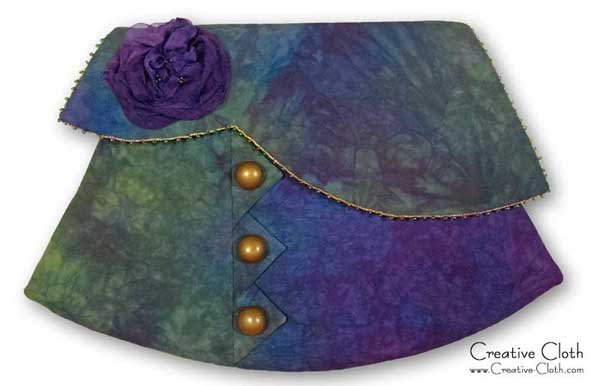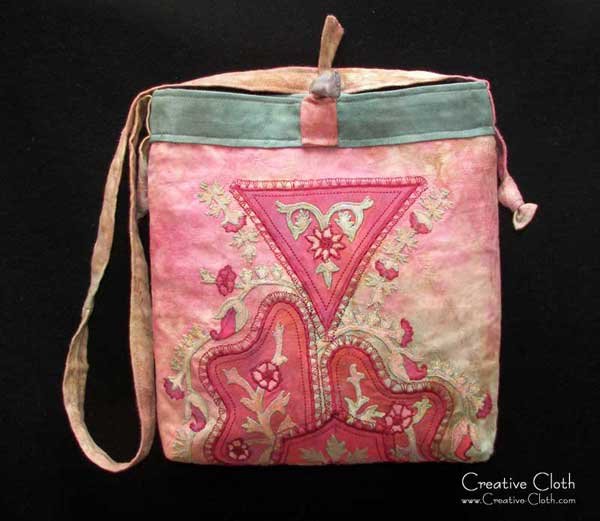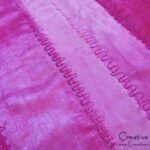
When making bags and purses, using the proper interfacing for your project is an important part of the construction process and can make or break the design of your bag or purse. Interfacing adds support and structure to the style of the bag, and also strengthens and stabilizes the fabric and prevents it from distorting and stretching out of shape.
There are lots of different types of interfacing available however my personal preference for bags and purses is to use fusible interfacing. Fusible interfacing is easy to use and comes in a wide variety of thicknesses and types. Depending on the type of interfacing, it will have a rough texture or shiny surface on the fusible side, and this is the side that fuses to the fabric. Most fusible interfacings are nonwoven which means they don’t have a grain and you can use them in any direction.
For Best Results when Using Fusible Interfacing
While fusible interfacing is easy to use and looks great when properly attached, fusible failure is quite common. It’s easy to know when your fusible has failed because the fabric will pucker or the interfacing will begin to peel away from the fabric. It’s also easy to entirely disintegrate the fusible glue by using too much steam.
To avoid fusible failure, it’s important to read the instructions on how to properly fuse the interfacing to your fabric.
Each type of fusible interfacing has a method for best adhering it to the fabric and this is explained on a piece of paper that is included when you buy interfacing, and very often you need to use a damp pressing cloth and/or the steam setting on your iron in order for the interfacing to adhere properly to the fabric.

It’s also generally recommended to use an interfacing that is slightly lighter in weight than your fabric. This will guarantee that your fabric looks good once the interfacing is fused to it. If in doubt, adhere a small test piece of interfacing to the fabric and see how it looks.
If you need additional support and structure, you can use a heavier interfacing on the lining or you can easily expand the rule and turn light-weight fabric into heavy-weight, simply by adding additional layers of interfacing on top of the original layer of interfacing.
My Favorite Interfacings
I use mostly Pellon brand interfacings because they’re readily available, affordable, and are good quality. I always keep a good stock of different types on hand.
Light-weight interfacing
Light-weight interfacing is perfect for linings as well as using in combination with other types of interfacing to add slightly more structure and stiffness. You can also use these types to turn light-weight fabric into medium-weight by adding additional layers of interfacing on top. I use Pellon 906F Sheerweight which is very light-weight, and Pellon 911FF Featherweight which a slightly thicker. Both these types are fusible and suitable for sheer to lightweight fabrics.
Medium-weight interfacing
Medium-weight interfacing is perfect for bags that require a little support and structure. I use Pellon 808 Craft-fuse which is fusible and quite crisp, and I also use Pellon 931TD which is fusible and softer than Craft-fuse. These types of interfacing are suitable for medium to heavyweight fabrics. I used Craft-fuse on this clutch version of Sally’s Bag which provides a nice structure for the bag and helps to keep its shape, but doesn’t make it too rigid. When you open the bag it’s easy to get your hand inside.

I also use this type of interfacing for small to medium tote bags and for strap handles.

Heavy-weight interfacing
Heavy-weight interfacing is perfect for bags with a rigid structure and for styles where you don’t want the fabric to shift and move too much, or at all. I use Pellon Peltex which is easy to sew and comes in three types:
I incorporate Peltex into a lot of my bag designs, particularly art bags, and also use it on bag flaps. If you want to know more about this type of stabilizer, I explain about Peltex in more detail here.

Fleece
Fleece is perfect for quilted bags and bags where you want to add some additional hand embellishment such as hand stitching or beading. If you need additional structure, you can always add another layer of interfacing to the lining or even the underside of the fleece. My favorite fleece is Pellon TP971F Thermolam Plus which is a needled fleece with fusible adhesive on one side. This fleece doesn’t shift or move out of shape like other types of fleece, and it provides very soft but stable support.

It’s OK to Mix’n’Match
Of course you can mix’n’match interfacings! On this purse I used medium-weight interfacing on the outer bag body so it would have structure but also fold in at the sides, a light-weight interfacing on the bag lining, and I used heavy-weight Peltex for the flap to help support the fabric folds and the embellishment, and also to keep the pointed shape firm and rigid.





